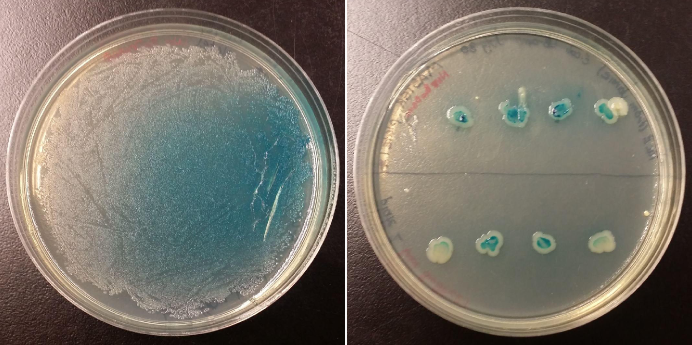Part:BBa_K1444017
Full length beta-galactosidase (LacZ)
Beta-galactosidase (EC 3.2.1.23), or LacZ, is a classic enzyme most commonly used in blue-white colony screening when used in specialized vectors. This part consists of the full length beta-galactosidase sequence which can be inserted downstream of a promoter to produce the tetrameric, 47.4kDa enzyme. This part was amplified from a well-used expression vector from a molecular biology lab, and cloned into the BioBrick vector pSB1C3.
Sequence and Features
- 10COMPATIBLE WITH RFC[10]
- 12COMPATIBLE WITH RFC[12]
- 21COMPATIBLE WITH RFC[21]
- 23COMPATIBLE WITH RFC[23]
- 25COMPATIBLE WITH RFC[25]
- 1000COMPATIBLE WITH RFC[1000]
Usage and Biology
Beta-galactosidase cleaves the beta-glycosidic bond of a galactose bound to an organic moiety; the physiological function is to break down beta-galactosides, such as lactose, into it's respective monnosaccharides. Beta-galactosidase can act as a reporter when provided substrates such as [http://en.wikipedia.org/wiki/X-gal X-gal]. The cleavage of X-gal releases galactose and the chromophoric, substituted indole moiety. The most common form of X-gal is 5-Bromo-3-indolyl β-D-galactopyranoside, which produces an intense blue pigment. Other versions of X-gal may be used to produce other color pigments. Typically 40-60uL of a 20ug/mL X-gal solution, dissolved in dimethyl sulfoxide or dimethyl formamide, is spread on a plate and allowed to dry before plating the bacteria expressing beta-galactosidase. X-gal may also be added to liquid cultures or incorporated into solid agar media. These images illustrate the colour that this protein is able to produce in E. coli on standard LB plates.
| None |

